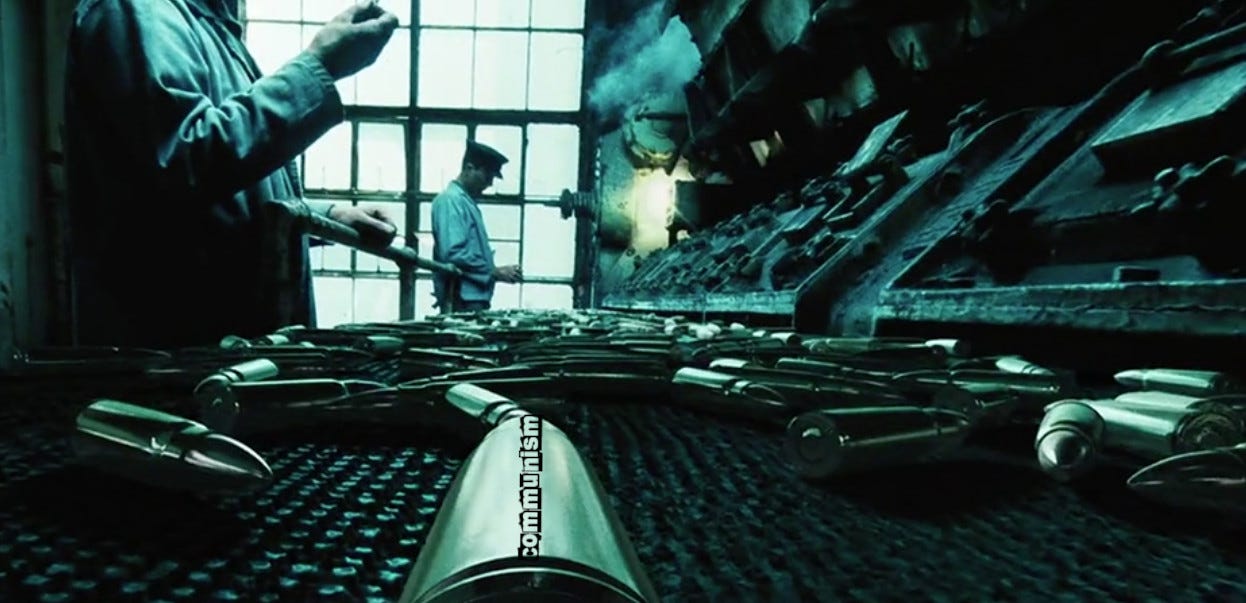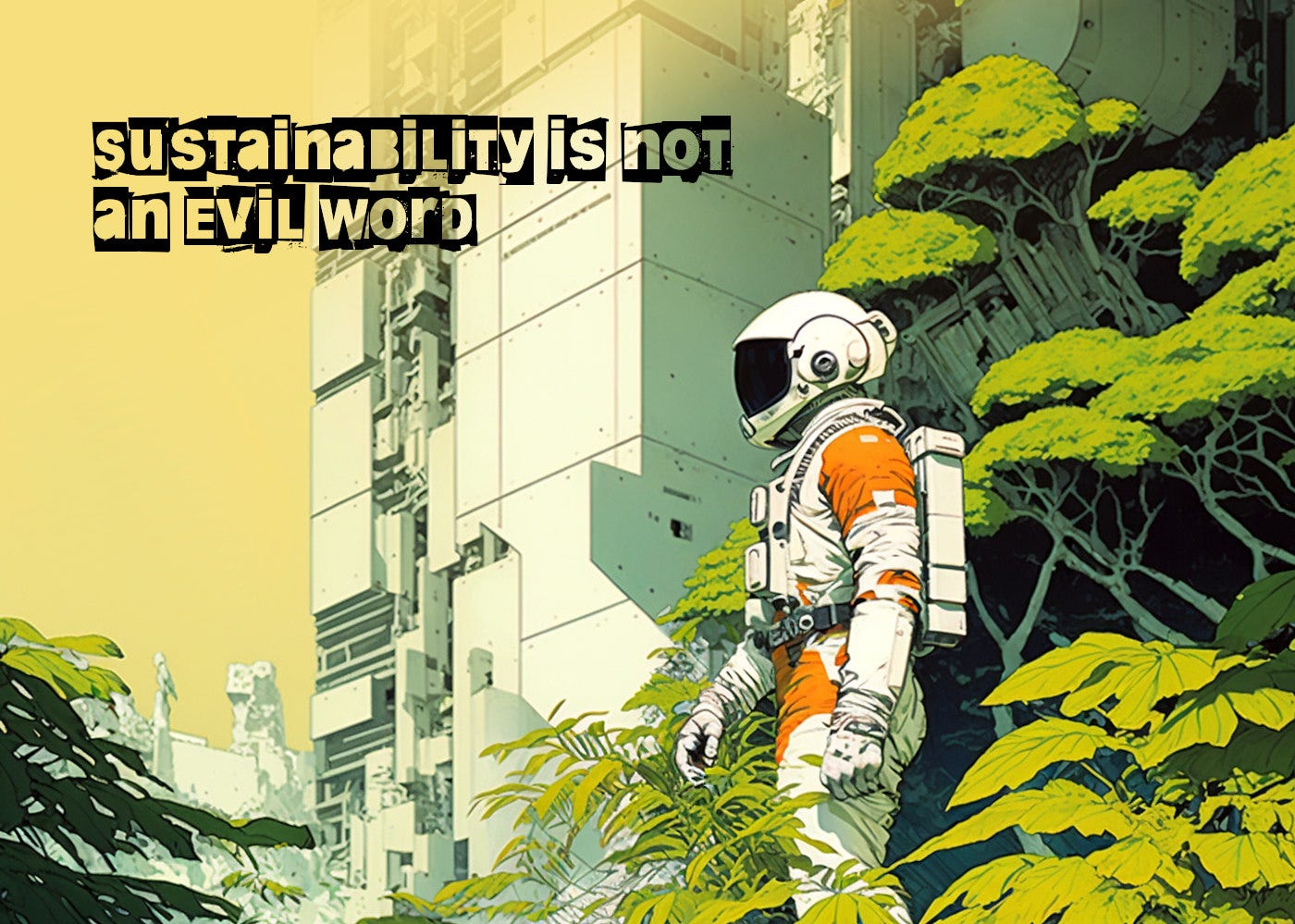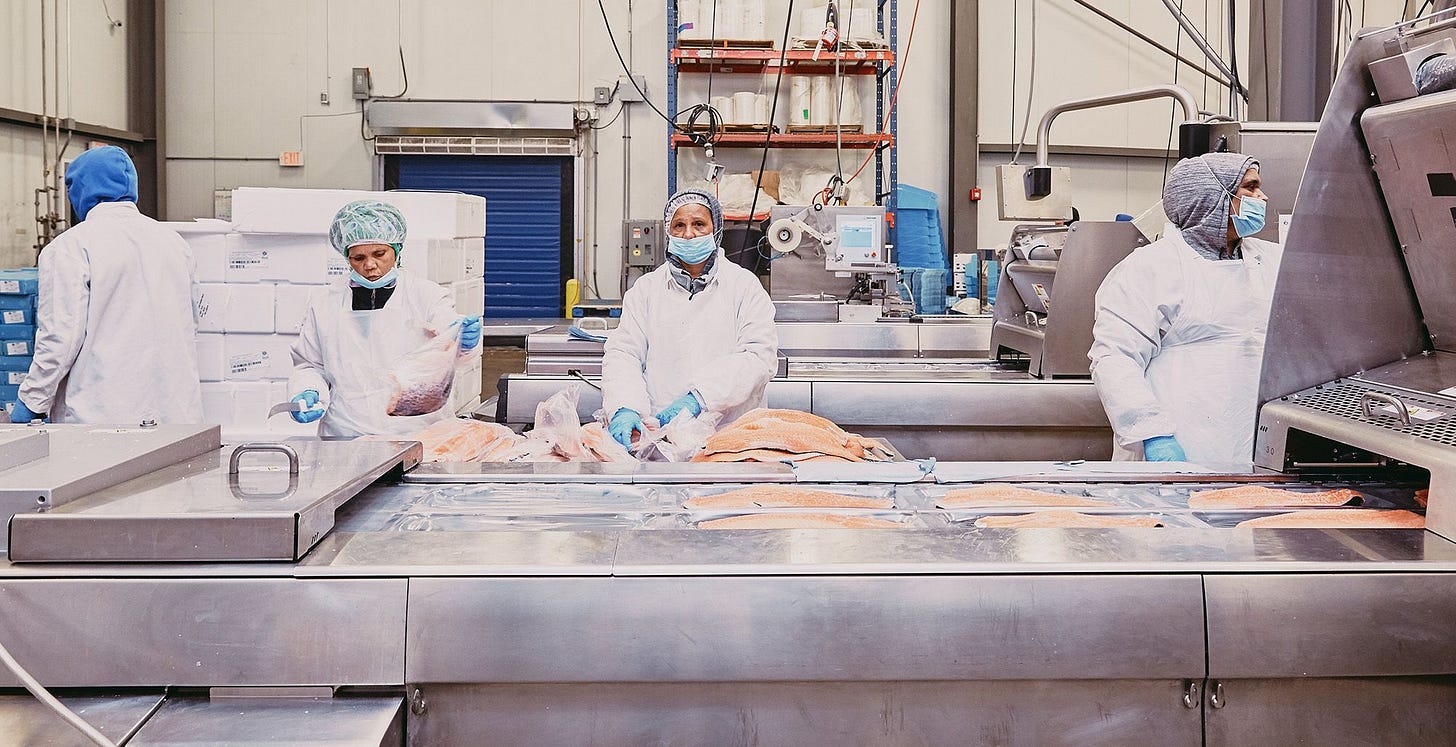Sustainability is not an evil word
Communism fails because of human nature. I want a better car than my neighbor, you probably do too, and so does everyone else living on this blue and green hunk of coagulated star dust. Theoretically in the vastness of the universe there may be a species that thrives under communism, but on our lovely planet the doctrine devolves into men in black jackets splattering wrongthink on basement walls with their knockoff Glocks and third-rate ammunition from Uzbekistan.

The key to a successful communist regime is lots of bullets
Having said that, I’m sure the problem is that communism has just never been done correctly before. We’ll get it right this time! And while I’m ecstatic at the prospect of having the United States go full kommie, before this glorious utopia arrives I thought I might put down my cricket bar for long enough to touch upon a buzzword that almost certainly conjures up negative emotions: sustainability.
All scathing and sarcastic introductions aside, it’s rather unfortunate that sustainability has been co-opted by the cultural tyrants because it’s not an inherently bad concept. As I define it, sustainability means preserving our resources such that our children and grandchildren might also enjoy a high standard of living in the future.
In this article I will propose three sustainability concepts that are inexpensive, won’t decrease our quality of life and only require a minor shift in societal norms. Let’s dive in.

1 – Only the first two years matter
I’m a huge fan of SpeedKar99, a Canadian mechanical engineer who moonlights as a grease monkey. On his deservedly popular YouTube channel, SpeedKar takes engines apart so that we can find out “what’s inside and how it works.”
After watching dozens of SpeedKar videos, as well as videos from other car channels, I’ve come to understand that certain auto manufacturers, most notably Mercedes, are building stupidly unsustainable cars. Mercedes is governed by this simple formula: our best customers buy/lease the latest model for two years and then turn it in for something new.
Due to this behavior, from a profitability perspective all Mercedes needs to do is make a car that will last for twenty-four months. To hell with whoever owns it afterwards, the next owner is of no consequence since the warranty will have expired and a used car buyer is not the target audience anyways.
That’s how you end up with Mercedes, a supposedly legendary automobile, consistently being ranked as one of the least reliable vehicles on the planet. Their motto has become: don’t use metal if plastic will do! If we can save $23 but the car will almost certainly break down 40,000 miles sooner, do it!

Towing companies love Mercedes
Mercedes’ business practice is an inherently unsustainable way of running a car company, and it doesn’t have to be this way. I asked SkeedKar which vehicle is the most reliable and he replied that Lexus stands out. A new sedan from Lexus will set you back about the same as a Merc, but one car will make it to 400,000 miles and the other will become so expensive to repair by 150,000 miles that it’s probably destined for the scrapyard
I don’t believe that there is any way government can effectively intervene and “force” automakers to produce better automobiles. I think any attempt to do so would turn into a scuffle with all the maturity of a middle school house party. However, if we as a society demanded better cars Mercedes is perfectly capable of making them. They’ve done it before and the fact that Toyota and Lexus are still producing reliable, long-lasting cars to this day is proof that it can be done profitably.
2 – Lighten up that roof, soldier
When my dad finished building his new house a few years ago he stuck a silver-colored roof on top. Why? Because the lighter color reflects more light, making the house more energy efficient. My dad lives in the north east United States where the energy savings will be good but not great. However, light roofs can make an outstanding difference the further south you go. Here’s an excerpt from the NYT.
Before the advent of central air-conditioning in the mid-20th-century, white- and cream-colored houses with reflective tin roofs were the norm in South Florida, for example. Then central air-conditioning arrived, along with dark roofs whose basic ingredients were often asphalt, tar and bitumen, or asphalt-based shingles. These materials absorb as much as 90 percent of the sun’s heat energy often useful in New England, but less so in Texas. By contrast, a white roof can absorb as little as 10 percent or 15 percent.
Lighter colored roofs cost a little bit more upfront but you can easily make that money back in reduced cooling costs. Plus, if you have a light roof your house won’t heat up to eight bagillion degrees during the day.
While light-colored roofs do come at a small premium, my dad (a home builder of 30 years) has told me that expense is not the primary concern for most people. What is? Aesthetics. People get dark colored roofs because they like the way they look, as if it really fucking matters. I’ll bet that with minimal effort we could create a culture that cares more about having a chilled house than a cool house.
3 – Keep our fish guts at home!
Knock knock
Who’s there?
We catch fish in the United States, pack up the corpses and send them to China where a bunch of Chinese wage-slaves rip the guts out and lop off the heads, put the meaty bits in a big metal box and ship ‘em back to the United States for sale.
Funny joke, right? My family always told me I should do stand up. Unfortunately, in this case there’s no Tom foolery involved. Here’s an excerpt from a WSJ article.
An estimated $900 million in fish and seafood on that list is first caught in the U.S., sent to China for processing into items like fish sticks and fillets, and then imported by U.S. companies to sell to American consumers.
I can’t be the only one who thinks that this is insane. Theoretically you could have a fish that gets caught off the Florida coast, shipped to China for processing – a heart-warming euphemism for having its intestines ripped out – and then sent back to a grocery store in Tallahassee where some dude in a wife beater ends up eating a slab of protein that’s more well-traveled than he is.
I would wager that most people don’t know their fish is being shipped to China and back, and they probably wouldn’t be thrilled to find out. This is an inherently unsustainable system and I’m no food safety expert, but I reckon it’s not the most sanitary thing in the world either.
How much extra could it cost to do the processing in the United States? Another $.50 or $1 per package of frozen fish? Whatever the cost is I suspect people would pay it for the luxury of not chowing down on made-in-China fish sticks. Shipping our fish to the other side of the world for processing is peak insanity and is a wholly unsustainable and unnecessary business practice.

Fish processing in China — Image from the WSJ
Conclusions
It’s unfortunate that the ideologues have hijacked phrases like sustainability. They’ve made it seem like we all have to live in pods and eat bugs or else the planet is going to blow up in 14 years, and so people rightfully push back and the whole thing turns into a political shitshow where only the advertising firms come out ahead.
No, the planet isn’t going to explode because of cow farts, yet there is actually a finite amount of raw materials available to us and it would be smart to use those resources judiciously whenever possible. If we dig deep I truly believe we can find happiness in a Lexus and a light-colored roof, even if it’s not everything we’ve dreamed of our whole lives.

